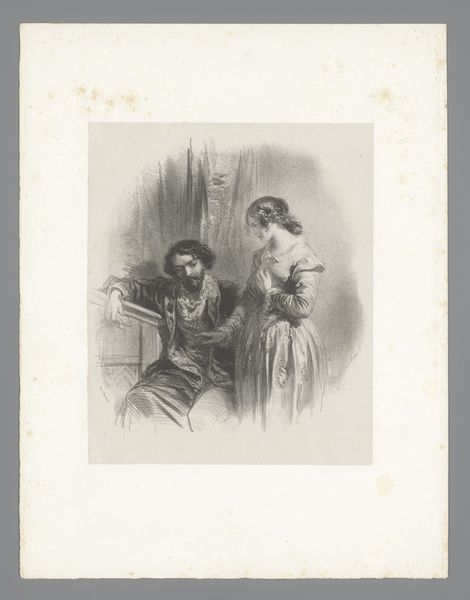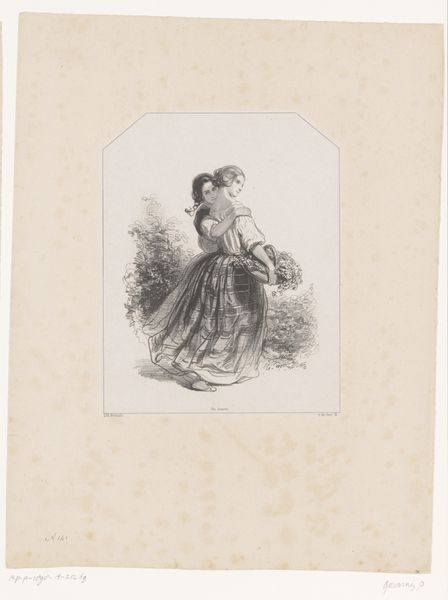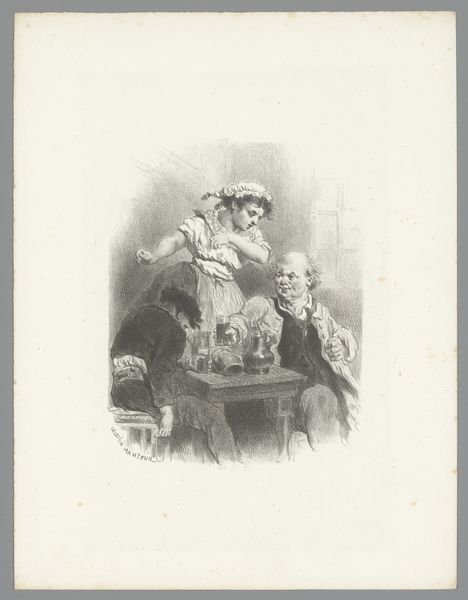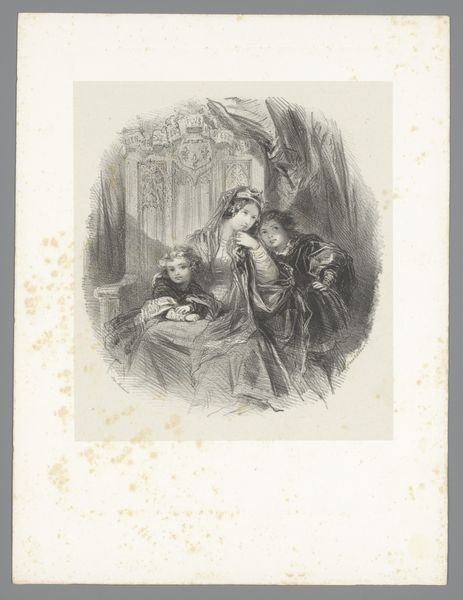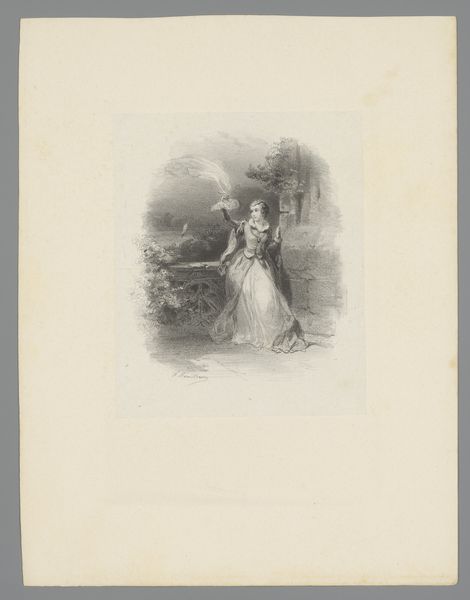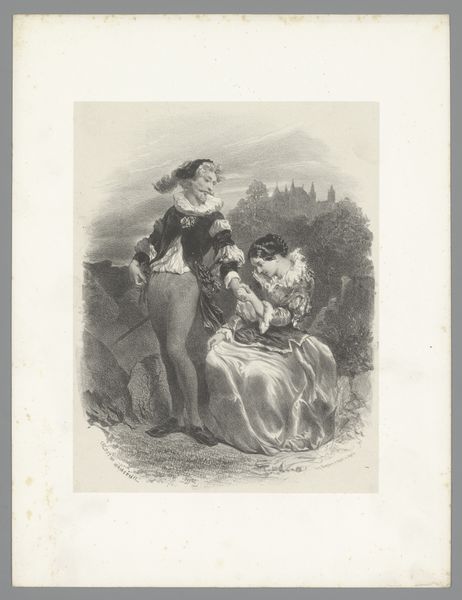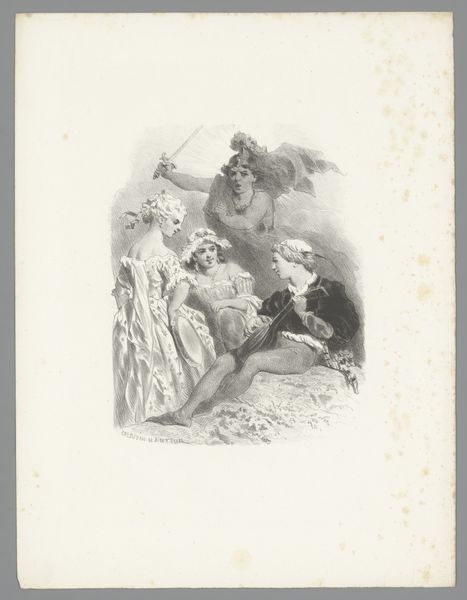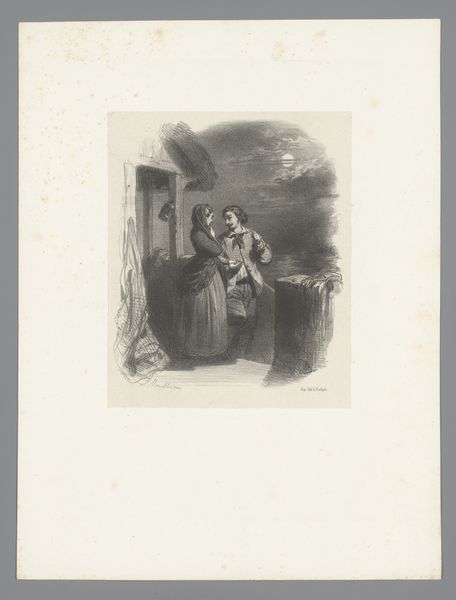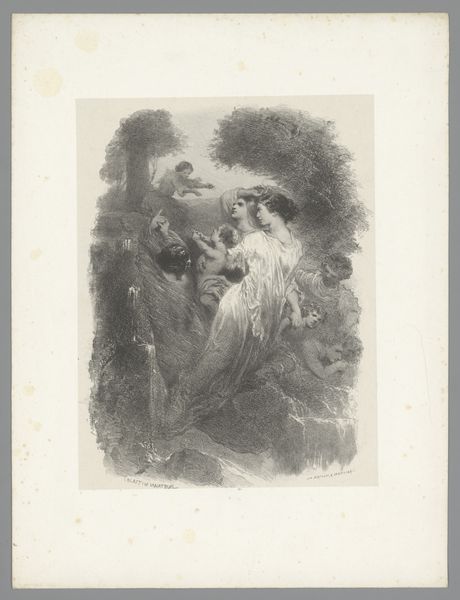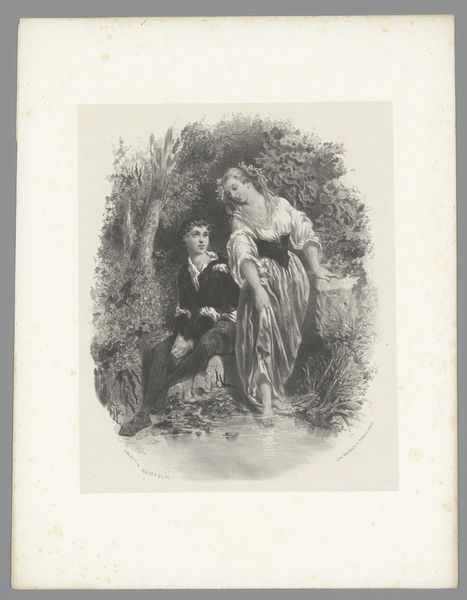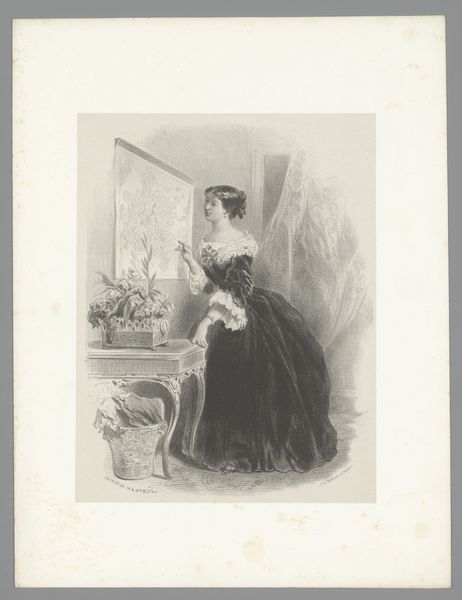
drawing, engraving
#
portrait
#
drawing
#
figuration
#
genre-painting
#
engraving
Dimensions: height 356 mm, width 275 mm
Copyright: Rijks Museum: Open Domain
Curator: Ah, here we have "Dansende vrouw en man met lier" or "Dancing Woman and Man with Lyre," attributed to Célestin Nanteuil and likely created between 1823 and 1873. It appears to be an engraving. Editor: It has a sort of frenetic energy to it. The cross-hatching gives the impression of movement and texture, but it's mostly grayscale values on paper. It lacks depth but offers something in its linear rendering of the forms. Curator: Nanteuil, quite the versatile artist, was very involved in the Romantic movement of his era. His work often reflects the tumultuous social climate and the yearning for individual expression so common in that time. Considering that, does this piece strike you as embodying some of those themes? Editor: Absolutely. You know, when I see it, I can't help but notice how the contrast isn't just visual, but also exists in how the materials are handled, giving it its romantic quality. The etching makes for such deliberate choices of light and shadow. This kind of line work serves almost like a means to highlight how constructed this scene might be. Curator: Yes, and I wonder if that sense of construction comments on the societal roles being played out at the time. A performer and her accompanist perhaps hinting at how labor, or at least, performative labor, mediates gender relations of the 19th century. Editor: It's intriguing how that instrument and those garments, clearly products of someone's work, become center stage themselves. Their creation and materiality mirror how these figures shape our understanding of each other and are ultimately essential to the exchange they offer, perhaps making it exploitative and transactional? Curator: Precisely. That adds another layer to Nanteuil's exploration of emotional expression. This wasn’t created in isolation; it likely circulated amongst salons or through printed media. Who was its intended audience, and how did their context influence the engraving’s resonance? Editor: I think you’re right to imply it goes beyond simple documentation; these etchings represent more than entertainment. They showcase societal structure; a perspective into lives built upon production but that were probably exploited in exchange. The deliberate craftsmanship and stark monochrome elevate it. Curator: It is truly quite reflective of Romantic period ideologies and performative representations during his era. Editor: Exactly, quite an intriguing dialogue woven with its craft, materiality, and the social exchange it represents!
Comments
No comments
Be the first to comment and join the conversation on the ultimate creative platform.
